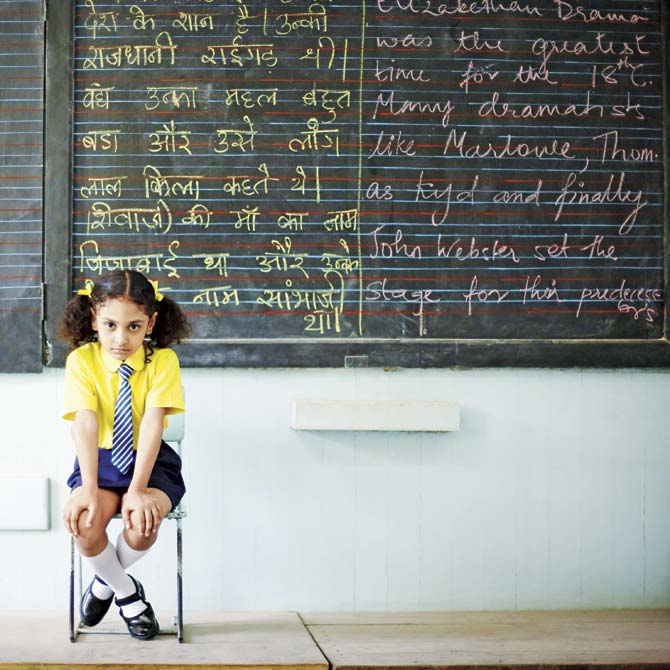On February 21, the world celebrated International Mother Language Day. The UNESCO in 1999 marked the day in recognition of the demonstration where East Pakistani students sacrificed their lives for recognition of their native language, Bangla as one of two national languages

 On February 21, the world celebrated International Mother Language Day. The UNESCO in 1999 marked the day in recognition of the demonstration where East Pakistani students sacrificed their lives for recognition of their native language, Bangla as one of two national languages. The demonstration of 21st February 1952 led to a nationalistic sentiment in Bengali-speaking Pakistanis and culminated in a freedom struggle that led to the birth of Bangladesh in 1971. East Pakistan ceased to exist and a new country was born out of a native-language movement.
On February 21, the world celebrated International Mother Language Day. The UNESCO in 1999 marked the day in recognition of the demonstration where East Pakistani students sacrificed their lives for recognition of their native language, Bangla as one of two national languages. The demonstration of 21st February 1952 led to a nationalistic sentiment in Bengali-speaking Pakistanis and culminated in a freedom struggle that led to the birth of Bangladesh in 1971. East Pakistan ceased to exist and a new country was born out of a native-language movement.
ADVERTISEMENT

While our children have cultural affinity with Hindi just because they have learnt it in school and they are influenced by Bollywood and news channels — the fact is that it isn’t necessarily their mother tongue. Representation pic/Thinkstock
The chief minister of West Bengal, Mamata Bannerjee sank her differences with Bangladesh last week over the Teesta water issue and visited Dhaka on Mother Language Day to pay her respects at Shaheed Minar, the place of the massacre of Bengali students by Pakistani forces. The day is observed as Martyrs Day in Bangladesh and West Bengal.
In Pakistan, languages and dialects have been dying since 1947. Obsessed with the imposition of Urdu over all local languages, schools in Pakistan do not teach local languages. According to one report 70 languages are spoken in Pakistan, wherein Urdu is spoken by just 7% of the population; yet Urdu is enforced as the medium of instruction in the majority of state schools. It is as if the country has completely forgotten the existence of its culture, tradition and history.
In India the debate has raged on about languages and mother tongue — the need to preserve them, to encourage their widespread use in schools, as medium of instruction, in official communication and so forth. There is also the opinion that some states have tilted to the other extreme in trying to popularise use of mother tongue at the cost of English and Hindi.
What is one’s native language or mother tongue? The loose definition generally accepted around the world is that it is the indigenous language of one’s parents, usually the first language learned by the child. But over time, that definition has changed as our cities and towns become more and more cosmopolitan.
While I can speak my mother tongue, many of my cousins cannot, and their children — the next generation — generally speak English, Hindi and the language of the city they live in. The mother tongue comes fourth in the order of pecking; hence it is barely understood, let alone spoken. Among my NRI cousins, almost none of the younger lot speak their mother tongue.
And with that loss is the slow moving away from tradition and culture of the nativity. Every few months I crave to visit towns and villages in South Kanra. They exist mostly in the recesses of my memory. It is Dakshina Kannada now. And almost everyone speaks Kannada and Tulu with English words thrown in for good measure. Everybody understands Hindi, though some will stubbornly not speak it.
In Bengaluru, my relatives have switched from Tulu to Kannada with a lilting Bangalorean accent and, dare I say, dialect. Yet I try and visit my home state as often as I can, just so that I can hear Kannada and Tulu being spoken. A link I don’t want to lose. Many of my cousins from Mumbai do the same. Their children speak Marathi not Tulu. But we try and speak to each other in Tulu and Kannada, desperately retaining the sounds and rhythm of our childhood spent in speaking a language almost alien in the families that we have created.
While our children have cultural affinity with Hindi just because they have learnt it in school — and they are influenced by Bollywood and news channels — the fact is that it isn’t necessarily their mother tongue. They have picked it up and developed an affinity because that is the first language they heard as kids. For many of us who didn’t, the link to our mother tongue is what makes us rooted in several cultures simultaneously and harmoniously.
Most Indians communicate ideas and thoughts in multiple languages or dialects to different groups of people. In a manner of speaking, multilingualism also adds to multiculturalism. And that is a good thing. We thrive in our diversity, not in homogeneity. Language barriers must come down; there should be increase in tolerance for other languages and dialects. Governments must not impose; instead they should encourage and foster mother tongues in an atmosphere free of distrust and disharmony.
Smita Prakash is Editor, News at Asian News International. You can follow her on twitter @smitaprakash
 Subscribe today by clicking the link and stay updated with the latest news!" Click here!
Subscribe today by clicking the link and stay updated with the latest news!" Click here!






